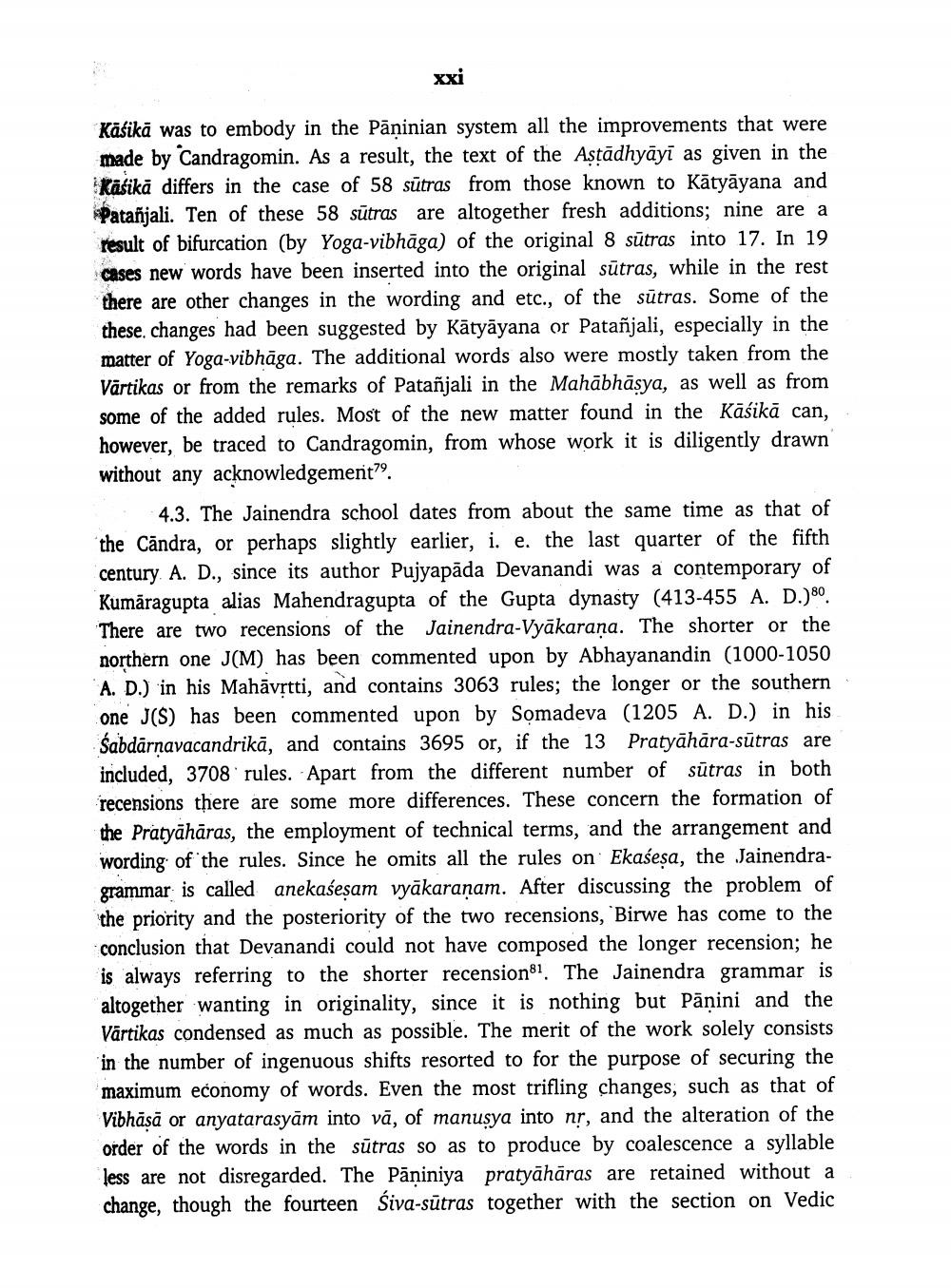________________ Kasika was to embody in the Paninian system all the improvements that were made by Candragomin. As a result, the text of the Astadhyayi as given in the Kasika differs in the case of 58 sutras from those known to Katyayana and Patanjali. Ten of these 58 sutras are altogether fresh additions; nine are a result of bifurcation (by Yoga-vibhaga) of the original 8 sutras into 17. In 19 cases new words have been inserted into the original sutras, while in the rest there are other changes in the wording and etc., of the sutras. Some of the these, changes had been suggested by Katyayana or Patanjali, especially in the matter of Yoga-vibhaga. The additional words also were mostly taken from the Vartikas or from the remarks of Patanjali in the Mahabhasya, as well as from some of the added rules. Most of the new matter found in the Kasika can, however, be traced to Candragomin, from whose work it is diligently drawn without any acknowledgement? 4.3. The Jainendra school dates from about the same time as that of the Candra, or perhaps slightly earlier, i. e. the last quarter of the fifth century A. D., since its author Pujyapada Devanandi was a contemporary of Kumaragupta alias Mahendragupta of the Gupta dynasty (413-455 A. D.) 80 There are two recensions of the Jainendra-Vyakarana. The shorter or the northern one J(M) has been commented upon by Abhayanandin (1000-1050 A. D.) in his Mahavrtti, and contains 3063 rules; the longer or the southern one J(S) has been commented upon by Somadeva (1205 A. D.) in his Sabdarnavacandrika, and contains 3695 or, if the 13 Pratyahara-sutras are included, 3708 rules. Apart from the different number of sutras in both recensions there are some more differences. These concern the formation of the Pratyaharas, the employment of technical terms, and the arrangement and wording of the rules. Since he omits all the rules on Ekasesa, the Jainendragrammar is called anekasesam vyakaranam. After discussing the problem of the priority and the posteriority of the two recensions, 'Birwe has come to the conclusion that Devanandi could not have composed the longer recension; he is always referring to the shorter recension81 The Jainendra grammar is altogether wanting in originality, since it is nothing but Panini and the Vartikas condensed as much as possible. The merit of the work solely consists in the number of ingenuous shifts resorted to for the purpose of securing the maximum economy of words. Even the most trifling changes, such as that of Vibhasa or anyatarasyam into va, of manusya into nr, and the alteration of the order of the words in the sutras so as to produce by coalescence a syllable less are not disregarded. The Paniniya pratyaharas are retained without a change, though the fourteen Siva-sutras together with the section on Vedic




